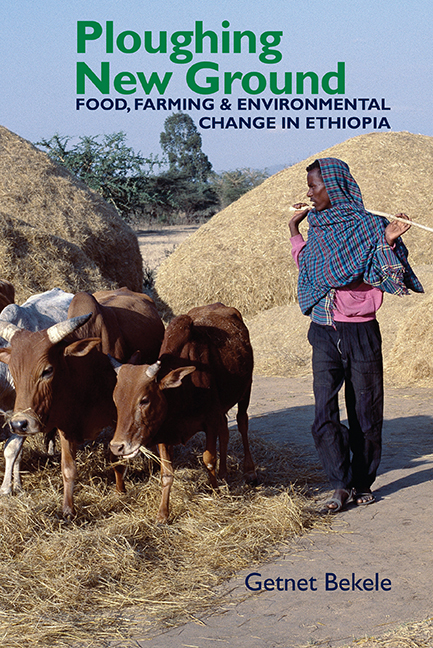Book contents
- Frontmatter
- Dedication
- Contents
- List of Maps and Tables
- Acknowledgements
- Note on Orthography
- Acronyms & Abbreviations
- Glossary
- Map
- Introduction
- 1 Landscape Pastoral: The making and remaking of a grassland environment, 1886–1916
- 2 Negotiating a Landscape: Continuity and change in a grassland environment, 1917–1941
- 3 Blurring the Boundaries: The ascendancy of crop production in a flexible environment, 1942–1955
- 4 Fresh Encounters and Morphing Strategies: The changing organization of production in an era of agricultural intervention, 1956–1965
- 5 Inputs, Outputs and the Farm: Transformations in the science, politics and praxis of agricultural development, 1966–1974
- 6 Competition and Co–existence: Creating space for small- to large-scale farming, 1966-1974
- 7 Of Production and Production Relations: Farming in an era of revolutionary change and socialist development, 1975–1991
- 8 Vicious Circle: Agricultural development at the time of ‘revolutionary democracy’, 1991–2016
- Conclusion
- Bibliography
- Index
- Eastern African Studies
6 - Competition and Co–existence: Creating space for small- to large-scale farming, 1966-1974
Published online by Cambridge University Press: 31 August 2018
- Frontmatter
- Dedication
- Contents
- List of Maps and Tables
- Acknowledgements
- Note on Orthography
- Acronyms & Abbreviations
- Glossary
- Map
- Introduction
- 1 Landscape Pastoral: The making and remaking of a grassland environment, 1886–1916
- 2 Negotiating a Landscape: Continuity and change in a grassland environment, 1917–1941
- 3 Blurring the Boundaries: The ascendancy of crop production in a flexible environment, 1942–1955
- 4 Fresh Encounters and Morphing Strategies: The changing organization of production in an era of agricultural intervention, 1956–1965
- 5 Inputs, Outputs and the Farm: Transformations in the science, politics and praxis of agricultural development, 1966–1974
- 6 Competition and Co–existence: Creating space for small- to large-scale farming, 1966-1974
- 7 Of Production and Production Relations: Farming in an era of revolutionary change and socialist development, 1975–1991
- 8 Vicious Circle: Agricultural development at the time of ‘revolutionary democracy’, 1991–2016
- Conclusion
- Bibliography
- Index
- Eastern African Studies
Summary
In Ethiopia, agriculture had been historically the exclusive prerogative of smallholder farmers. When seen from that angle, the changes that started to take place in the two decades after 1954 were remarkable in that they permitted the organization of large-scale commercial farms on a hitherto unprecedented scale. First to succeed in that endeavour were the small number of European agribusiness companies that came to specialize in sugar, tobacco and cotton production, with the aim of supplying in large quantities both the domestic and international markets. More important to my discussion in this chapter were, however, the second type of commercial farms that Ethiopian nationals started to organize after 1968. As the evidence from the lake region reveals, the pressure that the expansion of commercial farming exerted on smallholder farmers was considerable. Yet rather than succumbing to that pressure local farmers, most notably the share tenants, were able to come up with a set of tactics and strategies that enabled them to stay on the land and to succeed in farming all over again. Their new-found interest in specialized farming and their willingness to negotiate new (higher) terms of rent with their oldest and latest protagonists, namely the absentee landowners of the previous two decades and the newly arriving group of commercial farmers, were products of that factor. As this chapter seeks to demonstrate, the impact that these developments had on the evolution of the lake region's agriculture and agrarian politics in that period was profound.
FARMING BIG IN THE LAND OF SMALL-SCALE AGRICULTURE
One of the most enduring themes in the history of Ethiopian agriculture pertained to the pre-eminence of small-scale farming. Indeed, it was only in the course of the twentieth century that medium- to large-scale commercial farms were able to grow in Ethiopia for the first time. Even then, such farms had difficulty enduring and thriving in Ethiopia to any meaningful degrees before 1950. This was mainly because of political factors. For example, the assault that the pioneering group of commercial farmers faced from the Italian colonial administration's nationalization policy in June 1936 was direct. Consequently, the farms that they had organized in the previous two decades in certain parts of the country, including the lake region, fizzled out prematurely as a result of that assault.
- Type
- Chapter
- Information
- Ploughing New GroundFood, Farming & Environmental Change in Ethiopia, pp. 124 - 140Publisher: Boydell & BrewerPrint publication year: 2017

